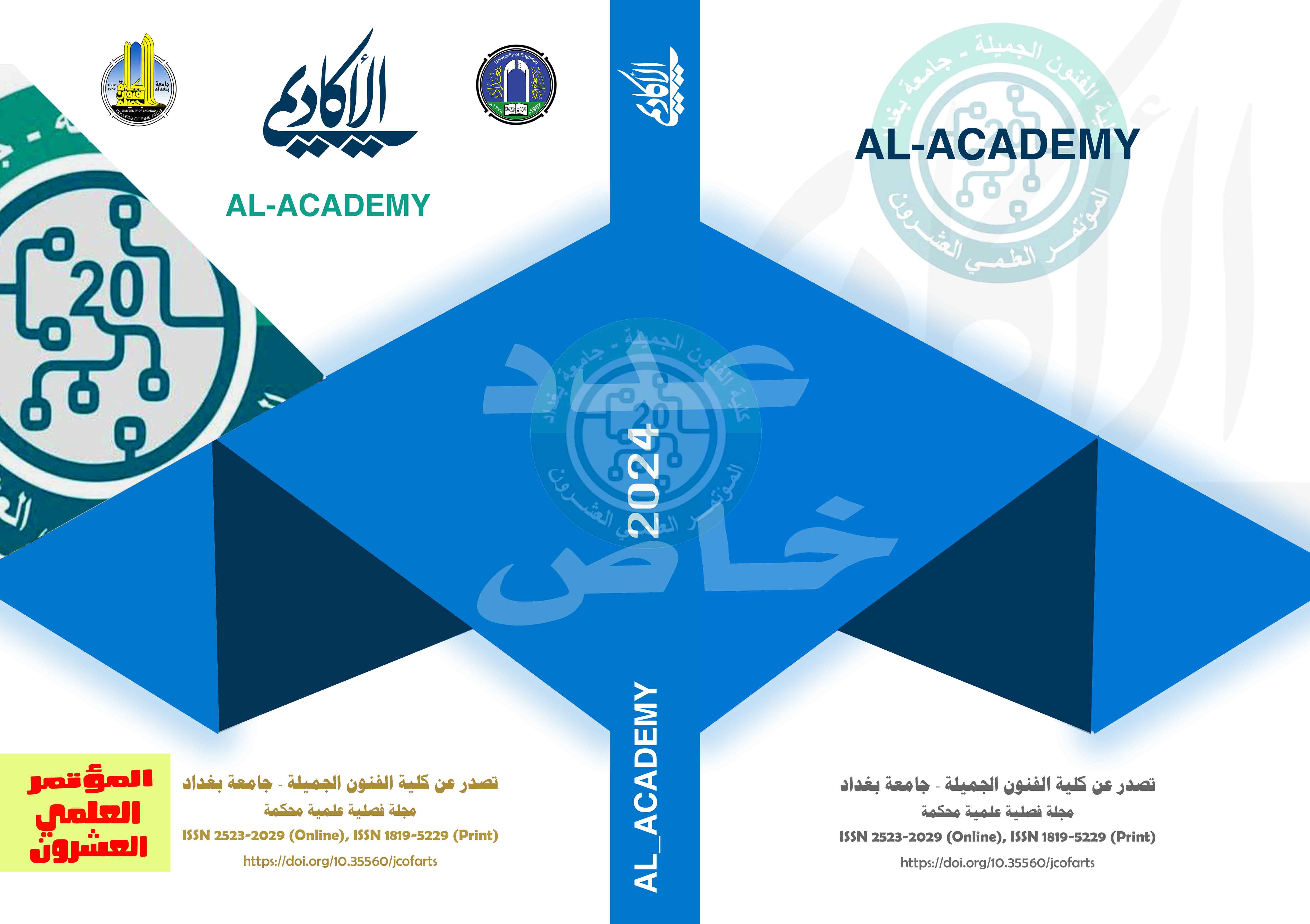النظم الايكولوجية واشتغالاتها في تصميم الفضاءات الداخلية للفنادق
DOI:
https://doi.org/10.35560/jcofarts1450الملخص
تأتي المفاهيم البيئية لتؤطر علاقات التوافق الحديث في التصميم الداخلي التي تبنى عن طريقها المعالجات الفنية والابداعية على وفق مخرجات تصميمية تؤلف بين جنباتها معطيات الحاجة الوظيفية عن طريق أولويات التوظيف المادي لمكونات الطبيعة وما تحتويه البيئة من نظم تشتمل عليها وسائل الاندماج الايكولوجي (النظم البيئية) بين الفضاءات الداخلية وطبيعة المكونات الحياتية لتحقيق فعل الانسجام والتكيف وما ينتج عنها من ترددات تمثل انعكاس للاستدامة البيئية الطبيعية والصناعية.
المراجع
Al Dabbagh, S. (2015). Sustainability in the interior space within the principle of recycling and reuse of the interior spaces of restaurants as a case study, Design and Environment Conference. Baghdad: College of Applied Arts.
Al-Ani, A. A. (2006). The impact of ecological theory on urban planning and design in Iraq, Master’s thesis, unpublished. . Baghdad: University of Baghdad, College of Engineering.
Al-Bazzaz, A. (1997). Design facts and hypotheses. Baghdad: Al-Fath Library for Printing and Reproduction.
Al-Shammari, H. s. (2023). Terms and specifications of green (ecological) buildings. United Arab Emirates. Emirate of Dubai: Electricity and Water Authority of the Emirate of Dubai.
Endlicher, W. (2007). Langner, M.; Hesse, M.; Mieg, H.A.; Kowarik, I.; Hostert, P.; Kulke, E.; Nützmann, G.; Schulz, M.; van der Meer, E.; Wessolek, G. Urban Ecology– Definitions and Concepts. In Shrinking Cities: Effects on Urban Ecology and Challenges for Urb. G. Urban Ecology– Definitions and Concepts. In Shrinking Cities.
Hammadi, M. F. (2014). Planning and design foundations of the environmentally friendly ecological city,: . Baghdad: unpublished master’s thesis. BaghdadCollege of Engineering - University of Baghdad.
Kamuna, h. (1981). The city and its architectural monuments, Ministry of Culture. Baghdad: Sumer Magazine, Issue 27, Directorate of General Antiquities.
Khion, p. A. (2019). Ecology of urban spaces (Abu Nawas area in Baghdad) Master’s thesis (unpublished). Baghdad. Baghdad: University of Baghdad, College of Engineering - Department of Architecture.
Khudair, L. M. (2015). The impact of local communities on eco-tourism facilities with a focus on eco-hotel design standards, unpublished master’s thesis. Cairo: Faculty of Engineering, Ain Al-Shams University.
m, a. (2012). Green Hotel Associations.”waat arethe green hotel development” cornell Hospity. dubai.
Niemelä, J. (1991). Ecology and Urban Planning. Biodiversity & Conservation, 8(1) . New York.
nsall, D. ,. (2008). Living Buildings: Architectural Conservation: Philosophy, Principles and Practice. USA: Images Publishing Dist Ac; first Edition edition, .
Rashdan, W. (2016 ). The impact of innovative smart design solutions on achieving sustainable interior design,. International th11 Conference on Urban Regeneration and Sustainability.
Walbridge, M. R. (1997). Urban ecosystems. Silurian ecosystems. webster, m. , Available at: ,7/2 2023. [Online] . merriam-webster.com .
Zhao, C.-r. B. (2014). Evaluation of urban eco-security—A case study of Mianyang City,. China: Sustainability .














